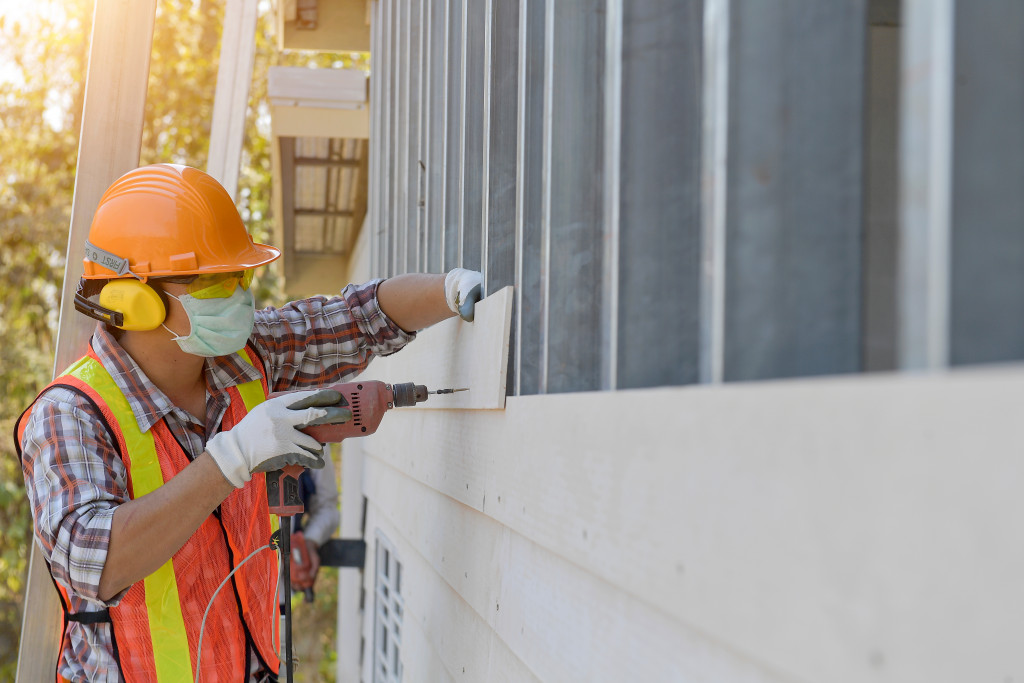- Hire a professional home inspector to assess the property’s overall structural and safety defects.
- Plan and budget for the restoration to avoid costly change orders and delays.
- Source high-quality building materials to maintain the home’s original charm while also considering energy efficiency upgrades.
- Communicate openly with your contractor to ensure the restoration follows your specifications.
Restoring an older home can be a rewarding experience, especially if it will serve as your family’s new home. However, the restoration process can also be challenging, and you may encounter a few surprises. When planning to restore an older home, you must approach the project with caution and attention to detail.
This blog post will share essential tips to restore an older home for your family. These tips will help you identify potential restoration issues to anticipate, where to source materials, how to manage the restoration process, and what to expect once you move in.
1. Hire a Professional Home Inspector:
When restoring an older home, it’s essential to know the state of its structural systems. These systems could be deteriorated or outdated, leading to costly repairs, safety hazards, and structural failures in the future. A home inspector will assess the property’s overall structural and safety defects and recommend the necessary repairs before you begin restoration. Here are some crucial areas to get inspected:
a. Electrical wirings
Check for exposed wiring and inspect outlets, switches, and circuits. These should be up to code and safe for use. A licensed electrician can conduct a more in-depth inspection and advise you on necessary repairs or replacements.
b. Plumbing system
Inspect the pipes for leaks, corrosion, and blockages. Old plumbing systems can be prone to leakage and clogs, so getting a professional to inspect them is always good practice.
c. Foundations
Check for cracks, settlement, and other structural problems. Get a structural engineer to assess the home’s foundation before restoration begins. The foundation may need to be reinforced or replaced if it is unstable.
d. Roofing
Older homes can have weak or aging roofs that may need to be replaced for safety and stability. Working with expert roofing contractors will help you identify any potential issues with your roof and advice on the best materials to use. They can also provide helpful maintenance tips.

2. Plan and Budget for the Restoration:
Restoring an older home is a time-consuming and expensive project. You need a detailed plan and a budget for everything from material sourcing and labor costs to permits and taxes. Doing this will prevent costly change orders that could strain your finances and delay the restoration process. Try to create a timeline with realistic goals and milestones. This will help you manage the restoration process and ensure that everything is completed on time.
3. Source for High-Quality Building Materials:
Older homes have unique architecture and design details that require specific building materials. Sourcing high-quality materials can be challenging, but ensuring that the restored home retains its historical significance and aesthetic appeal is essential. You could research local salvage yards, antique shops, and classified ad websites to find high-quality materials at competitive prices.
You can also contact specialty shops specializing in restoration materials, such as reclaimed wood, antique fixtures, and vintage paint colors. This can help you maintain the home’s original charm. It’s also important to note that some materials may need to be custom-made or ordered from overseas, so plan accordingly.
4. Consider Energy Efficiency Upgrades:
When restoring an older home, it’s essential to consider energy efficiency upgrades such as insulation, air sealing, and upgrading your heating and cooling systems. These upgrades will improve energy efficiency, reducing your home’s energy bills and carbon footprint and improving your family’s comfort. Most of these upgrades can add value to your home if you ever sell. You can consult with professionals to learn more about the available energy efficiency upgrades and how to implement them.

5. Communicate Openly with Your Contractor:
Open communication with your contractor is critical, especially during restoration. You should communicate your expectations, priorities, and timelines to avoid misunderstandings and frustrations. You could also visit the job site regularly to monitor progress and ensure the restoration follows your specifications. Don’t hesitate to ask questions or voice concerns when necessary. This will help you get the most out of your restoration project and avoid costly delays.
Restoring an older home to live in with your family can be an exciting project but requires adequate planning, budgeting, and execution. By following the essential tips in this blog post, you’ll have a successful restoration process that gives you and your family the home of your dreams. Remember that restoring an older home is an investment that requires patience, diligence, and attention to detail, but the rewards are worth it. With the right approach, you can bring your home back to life and create a unique living space that is both beautiful and comfortable.

